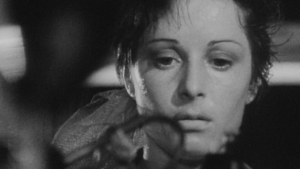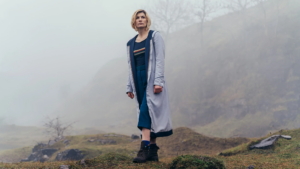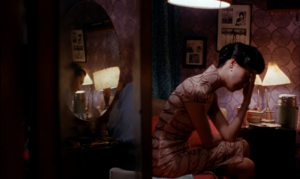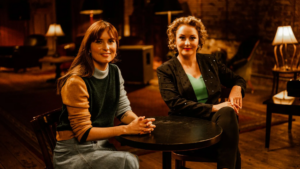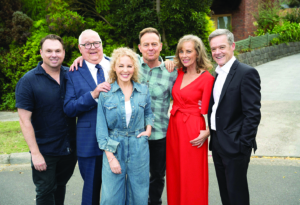There’s something strange about seeing and hearing the way Australia is represented by international screen content producers. Somehow, they make us sound too twangy and look too bright – or, worse, we are consigned to narrow, genre-based narratives and quirky, stereotypical characters. The most common tend to be blokes battling crocodiles (either of the Dundee or the Hunter variety), complete with long-drawn-out vowel sounds and a wild enthusiasm for potentially deadly wildlife.
Most uncomfortable is the way international performers and creators have attempted our accent. British national treasure Stephen Fry has explained he can only turn his posh plum into an Australian twang by imagining he has heartburn (the result sounds physically painful, but also surprisingly accurate), while it seems the cast of American sitcom The Good Place are just squishing their cheeks together and going up at the end of sentences for good measure. No doubt the American producers and broader public barely know the difference – but, here in Oz, the sounds are, well, dreadful.
Americans and Brits tend to call on Australian people and culture when they are searching for a way to engage what can be called a ‘familiar exotic’. Certainly, this is true of The Good Place, whose third season depicts Australia as a type of earthly experience that is somehow strangely unreal. As showrunner Michael Schur has explained, Australia was chosen because the creative team ‘needed a predominantly English speaking nation that was on the other side of the world from [main protagonist] Eleanor’s [Kristen Bell] home’. The season’s only real saving graces are the brilliant(ly awful) puns relating to Aussie icons – gems like food cart We Crumb from a Land Down Under and an apparently inconsequential character called Ken Garoo (Adam Groves). So bad it’s good, right?
Other examples are less extreme. Olivia Newton-John’s Sandy from Grease (Randal Kleiser, 1978) was not specifically written as Australian. As the story goes, co-producer Allan Carr wanted Newton-John as the star of his production, but the singer was nervous about having to adopt an American accent. Keen to keep our Livvy happy and on board, Carr simply rewrote Sandy’s backstory. Save for a couple of tiny, throwaway lines here and there (notably the quick jab ‘the Kangaroo Bop’ during the big school dance competition), very little is said about Sandy’s nationality in the film at all – though perhaps this enigma adds to her ‘familiarly exotic’ appeal. In the end, Newton-John’s appeal was clearly universal enough to sidestep any cross-cultural setbacks or difficulties.
This form of accommodation has seldom been made for others – think, for example, of how rarely Russell Crowe, Nicole Kidman or Hugh Jackman have performed for Hollywood without adopting another accent. And then consider how often during promotional junkets they’ve had to explain certain Australianisms for a curious international audience. Cue: the eating of a vegemite sandwich as a late-night talk-show stunt.
Interestingly, the last few years has seen a rush of Australian representations in international children’s screen media. This ‘wave’ arguably began when Disney championed the proudly Australian-sounding Wiggles in the US in the early 2000s; given that many other works get redubbed or remade for the US, this was quite the achievement. Other children’s works have ‘visited’ Australia, too – including The Simpsons (okay, not just for little kids) as well as iconic UK properties Peppa Pig and Thomas the Tank Engine.
Both the Peppa Pig and Thomas episodes in question have featured Australians and Australian culture as part of their respective storylines and soundtrack – still with a bit of a cringe-worthy edge, but not nearly as much tokenistic ‘exoticism’ that appears in some ‘grown-up’ media. In particular, when Peppa and her family visit Australia – staying with Kylie Kangaroo and her family – the more stereotypical references to boomerang-throwing and the ‘singing budgie’ are complemented by a lovely visit to the Great Barrier Reef and an exploration of its unique attributes.
There are, of course, those who have managed our sound without a fingernail-down-a-blackboard quality. Kate Winslet’s Tilly Dunnage in The Dressmaker (Jocelyn Moorhouse, 2015) was a fine case in point – though, let’s face it, this English actor can do just about anything. Other notable performances include Dev Patel’s Saroo Brierley in Lion (Garth Davis, 2016) and Robert Downey Jr’s hilarious ‘method-acting Aussie’ in Tropic Thunder (Ben Stiller, 2008). The last of these employed some artistic licence in the form of a thinly veiled reference to Crowe’s apparently crazy devotion to strange acting methods and prep, and the exaggerated drawl was just as ridiculous as Crowe himself – both the Best Actor Oscar winner and the curator of a fancy garage sale called The Art of Divorce. These three examples made Caris Bizzaca’s ‘13 Times Non-Aussies Tried to Sound ’Strayan’ list for Screen Australia – a great collection to check out if you want more.
However, it should also be acknowledged that, really, ours is a bloody hard tongue to master. As the legendary (and gone-too-soon) John Clarke observed in the documentary The Sounds of Aus (David Swann, 2007), the Australian accent is, in many ways, a ‘miracle’, given how few people we have spread out across such a large area. In that piece, theories about the accent’s origins were explored – Indigenous influences, British convict stock, and questions about whether we talk so slowly and tight-lipped so that outback flies can’t enter our mouths. Clarke also called the Australian accent ‘famous and hauntingly beautiful’ – I dunno ’bout that, Johnno, but it’s ours so we’ll take it.

